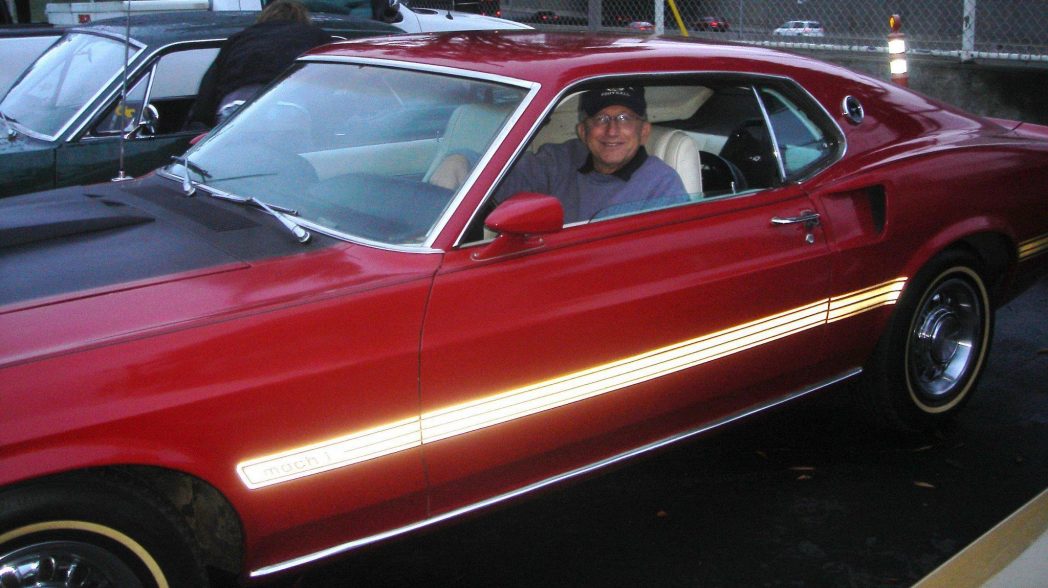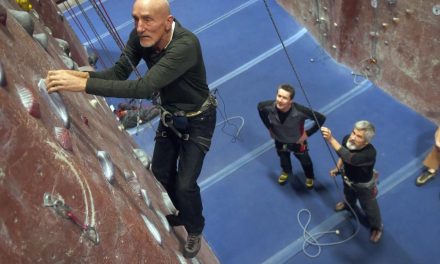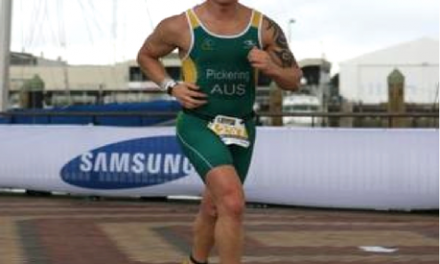
Imagine sustaining a spinal cord injury in a society that wasn’t ready for wheelchair-users to live outside of the hospital. That society existed in the US in 1964 and Jody Dyer, now 76 years old, experienced it first-hand. Undeterred by the inaccessible environment that surrounded him, he went on to accomplish some amazing “firsts” as a wheelchair-user from the college he attended to the amazing career he went on to have. .
The Injury
Growing up, Dyer was an Army kid. With a dad in the Army serving as a Lieutenant Colonel, his family moved to Mannheim, Germany from northern Virginia when he was a teenager. In 11th grade, Dyer was in a car accident while driving his VW Bug. “I was alone, driving on a narrow winding road. I was forced off the road, rolled the car and was ejected. It was 3 May, 1964.”
Dyer was taken by helicopter to Landstuhl Army Medical Center near Frankfurt; the largest military hospital outside of the US. After undergoing surgery and a brief hospital stay, he was airlifted to Walter Reed back in the US. “There was really no rehab available as I was a dependent and not an active military vet. To be honest, there wasn’t much rehab, as we know it today, available to anyone. That was all far in the future. They did supply a set of leg braces which proved useless.” Dyer sustained a T10 injury.
And fortunately his father was not interested in the “long-term stay facility” recommended to Dyer’s family by his doctors. “It was more of a nursing home, warehouse, hospice place,” says Dyer. “My Dad immediately decided this was unacceptable. He took me home and made the minimal modifications to enable me to carry out activities of daily living which were all self-taught.”
Before the accident, Dyer was a member of the wrestling team; a group of guys that became integral to his post-injury success as a teen. “The good news was that I returned to the original high school I attended before going to Germany 6 months prior. At Annandale High School, in spite of being a mediocre student, I was socially popular and a varsity athlete in wrestling.”
Dyer says his teammates were his biggest supporters. “My old friends became deeply involved and made sure that I was included in all activities. I believe this was an essential element of my reintegration into ‘normal life”‘ in the real world. I remain friends with many of those folks and I have expressed my gratitude often.”
College With Zero Accessibility
After high school, Dyer – despite his injury – never once thought college wasn’t possible. “In 1965 at my high school, 95%+ of graduating seniors went to college so not going to college wasn’t really an option,” he says. At the time, there was only one college in the US that was fully accessible (University of Illinois at Urbana-Champaign). Dyer choose to attend a school he visited when he was just 12 years old, Georgia Tech.
“My dad said Georgia Tech was the best engineering school in the country. For some reason this stuck,” says Dyer. “I applied, but was quickly rejected as they stated they didn’t have adequate facilities. At this point, I made my first, and arguably most consequential sales call: The admissions office at Tech was on the 3rd floor of the Tech Tower which did not have an elevator.”
Refusing to let stairs keep him from attending his dream school, he took his rejection letter and recruited students to carry him up 6 flights of stairs. “The registrar, Dean Carmichael, wasn’t there so I waited,” says Dyer. “When he arrived several hours later, I explained that I really wanted to go to Tech. He said it would be impossible because of classrooms and labs on upper floors. There were no elevators. At that point, I mentioned that his office was on the 3rd floor and there I was. So on the spot, we made a deal. He admitted me and I agreed if it wasn’t working I would let him know.”
As one would assume, going to a college in a wheelchair that wasn’t accessible was a massive challenge for Dyer. “I was a fresh para, away from home for the first time, without the strong social support and in a completely inaccessible environment dealing with most strenuous academic demands I had ever encountered.”
“It wasn’t a pleasant college experience,” he continues. “But every day, every project completed, every exam passed built confidence and made independence a realistic expectation. And it was my first exposure to and experience with computers which was something that being in a chair wasn’t a distinct disadvantage. In short, It was a crucible. I can’t recommend it for everyone. Candidly, if I had known what was involved, I may have made a different choice.
And while going to school, Dyer inevitably ran into some strange collegiate traditions that now would be considered discriminatory. “In those days to graduate from Georgia Tech, you were required to complete a course called ‘DRownproofing.’ That required that you stay afloat for 30 minutes with your hands and feet bound. In my case the feet part was unnecessary obviously. Having survived that, I qualified for a SCUBA certification and had diving as a hobby for many years.”
Software Manager to CEO
After Dyer received his bachelor’s degree in industrial engineering, he returned to Georgia Tech to get his masters in computer science in 1971. But he wasn’t done. After getting his master’s, he applied the Harvard Business College in 1975. “By the time I applied to Harvard Business School in 1975, I had been working for 5 years. Software was just beginning to be a thing and I had jobs involving the development of different types of software.”
“In my position, I was managing a team of 10 to 15 programmers,” says Dyer. “My entrepreneurial instincts kicked in and I decided I wanted to start my very own software company. I felt completely comfortable with the technical challenges but I really didn’t know anything about business so that is how I applied to business school at Harvard Business School.”
Dyer says that getting hired was actually quite easy, despite his wheelchair. “Actually getting a job, with a freshly minted engineering degree from Georgia Tech, was almost automatic. I recall I had 5 or 6 offers. Ford Motor flew me to Detroit for a plant visit and then notified me that they didn’t think the environment would be workable for a wheelchair user. I picked IBM in Boca Raton FL. It was the biggest computer company opening a new facility in Boca. The pay was competitive, work interesting, climate hospitable and there was SCUBA diving nearby. I was the only wheelchair-user I ever saw at IBM.”
After having a successful run at IBM, he started his own software company and was very successful. “One day, a very well-known venture capitalist showed up and made a proposal to buy out our company and merge it with a public company that was struggling. I wasn’t interested because I really didn’t like the idea of having a boss. So they sweetened the deal by saying if I was willing to relocate to NY, I could be CEO of the whole thing.”
Dyer was the CEO for a few years, but did not enjoy it. “I dislike NY for a dozen reasons. Running a public company, especially one in turmoil, imposes significant limitations. I worked out the remainder of my employment contract, liquidated my interest and moved back to Atlanta. Since then, I have continued to find small companies that can use some help and assist them to the next level of success.”
Travel & Handcycling
Dyer is no stranger to the athletic side of wheelchair life. In the 1980s, he was a wheelchair racer. “I actually placed 3rd in the first WC Masters category in the Peachtree Road Race 10K. I never cashed the $50 prize check.” Nowadays he is a huge fan of his Rio mobility firefly power add-on for his manual wheelchair. “This has changed my life as much as anything since I’ve been injured. I go places that I would have skipped if I had to push or load/unload my vehicle. I have 5,000 miles on mine. I just wish it had been available decades earlier.”
There are in fact a number of advancements that have completely blown Dyer’s mind since becoming paralyzed. “In short, everything has impressed me. Spinal cord trauma specialty centers, reserved seating at events, curb cuts, airline accommodations, hotel roll-in showers, cruise ship cabins, ultralight wheelchairs (my first manual wheelchair was a 45 pound Sears Roebuck chair), fertility treatments, pressure mapping for wheelchair seating, cure research, life expectancy and much more.”
Travel however has become one of his biggest passions. “I highly recommend exploring by way of cruise ship. I came to this late in life but they are extraordinarily accommodating and you can see a lot of places without the hassle of packing/unpacking and all the transport logistics.”
In fact, Dyer is a “Delta Million Miler” and has traveled to 40+ states. “I went to Rio during Carnival once. Brazil was not accessible. I’ve also been to most of the countries in western Europe. Many, especially in the North, are pretty accessible. In particular, my wife and I like France, Especially the French Riviera. We have had a small apartment in central Nice for 20 years.”
Married twice, he and his current wife, who he’s been married to for 33 years, don’t have no kids together but they have unofficially adopted a motley crew of folks “who are gifts in our lives,” he says.
Living in Atlanta, Georgia, Dyer has been officially retired for 10 years, but that doesn’t mean he’s fully against reactivating his career one day. “If an interesting person, company, opportunity or problem crosses my path, I can (and occasionally do) reactivated. Admittedly with a little less energy and stamina than back in the day. I will probably do this as long as I find it fun.”
As for his secret to his longevity in spite of paralysis, he chocks it up to both good genes and luck. “Both folks lived a long time,” he says. “I also think a positive attitude is essential. Make sure you stay active and try to accomplish something every day. Also, find something you enjoy doing and get better at it.”
Dyer also believes in the merit of the Stockdale Paradox. “It’s a belief in long-term positive outcomes in the face of great short term adversity. It has been formalized and documented. That said, I feel from the beginning, this is the mindset that has enabled me to push through.”
Originally published in Spinalpedia




